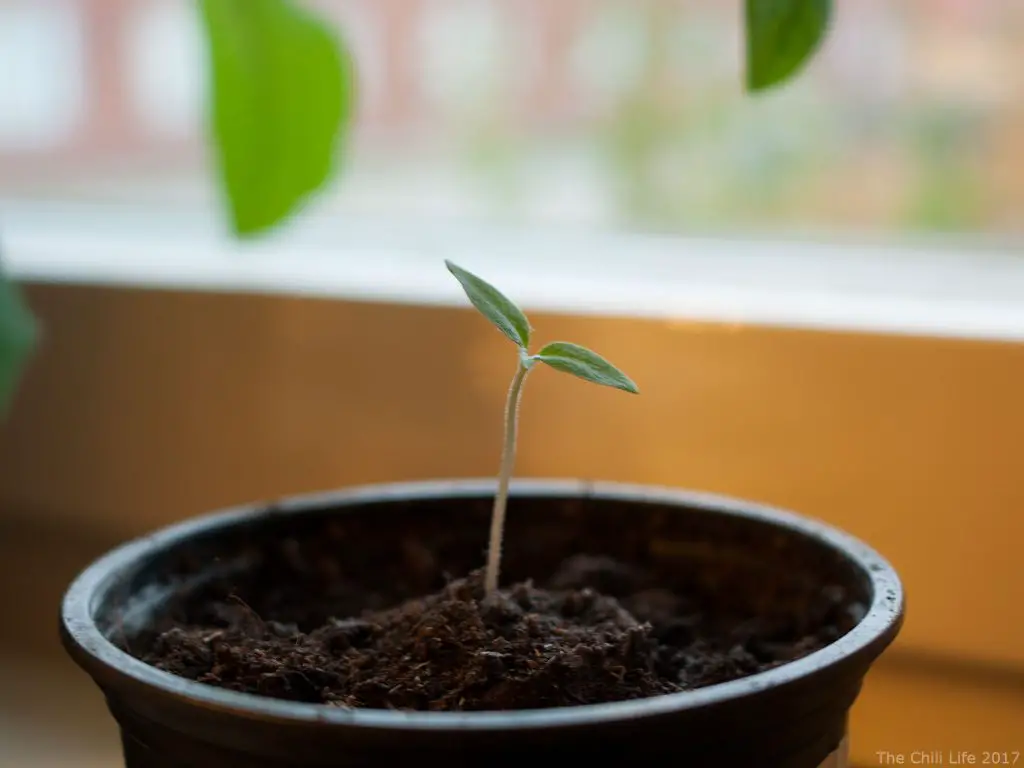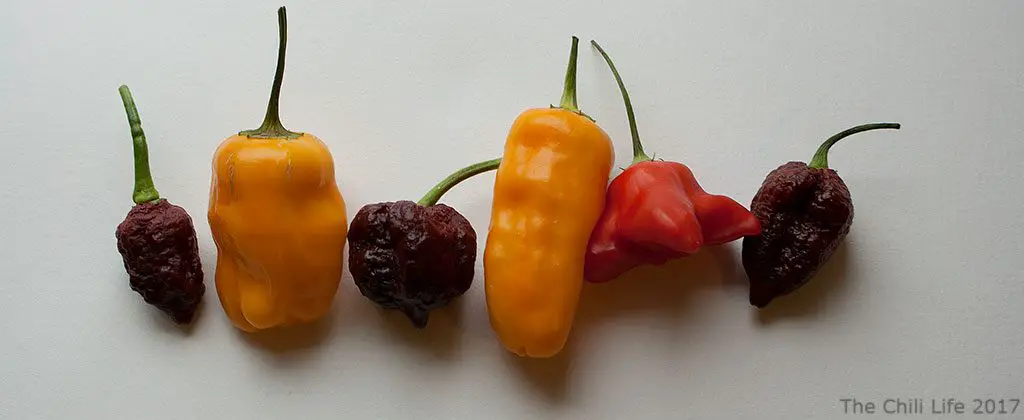In this guide, you will learn how to make the best soil for growing peppers in containers. In fact, when you grow chili in pots the soil and its composition are way more important than common belief.
Furthermore, a good soil mix also has a significant impact on the availability of the plant nutrients. That is, the best soil will provide your precious chili plants with the “food” that they need but it will also have good drainage as well as it will keep a balanced moist.
Typically, I start creating my pepper soil mix after I have germinated my chili seeds and the seeds start seedling. Germination of chili seeds can be done with heat mats, peat pellets, directly in the soil, and many other ways (see my post here, for instance).
Table of Contents
Choosing the pepper to grow
First, before getting into how to mix the best chili soil, I will give you some tips on what kind of chilies you can choose. Depending on taste, you can grow everything from mild to extremely hot chilies. Maybe you just want to grow them for ornamental purposes.
I have found growing Poblano peppers, a mild chili variety of the Capsicum Annuum species, very easy. Poblanos are also very good in chili dishes! You can, of course, go for an extremely hot pepper like the Carolina Reaper. This Capsicum Chinense variety may be a bit harder and you will need more patience. It takes longer for the seeds to germinate, the seedling to grow into a full-grown plant, and for the fruits to ripen.
The best soil mix for chilies
In this section, you are going to learn how to create the best soil for growing chili peppers. A good start is buying soil for roses and then mix your own perfect chili soil.
First, the composition of the soil is very important because if it is poor it does not matter that you have the added the best fertilizer. Why? Well, because then the chili plant cannot take advantage of all the good food you have provided in the soil.
Second, chili plants are very much like other plants growing; they need plenty of nutrition to grow. Nutrients added to the soil are dissolved in the water. Thus, if the water flows too fast through the pot, there is a high risk that the soil does not keep the good nutrients.
Hot peppers have shallow roots. This means that the best soil needs to have a loose texture so that the roots can spread easily. Good news! There is some stuff that can be added to your soil that will change the texture. For instance, you can add hydrograins or, my personal favorite, perlite.
As mentioned earlier, if the water flows too quickly through the soil the plants will not be able to absorb the fertilizers. Again, good news! If you add Vermiculite the water and nutrients will be retained in the pot.
Perlite
Now, when making the best chili soil you should definitely consider adding Perlite to the soil. Why should I add Perlite? Well, there are some advantages to using Perlite! Adding Perlite to the chili soil will increase the drainage. This, in turn, will have the effect that the roots will not rot by sitting in excessively wet compost, which can be very useful if you’re using a peat-based compost.
How much Perlite should you add? The pepper soil can be improved by mixing in about 10% Perlite. This allows you to oxygenate the growth medium better and the plant gets easier to develop roots.
Vermiculite
Vermiculite is another great addition and should be included in every chili pepper soil mix! Adding vermiculite to the soil increases water and nutrient retention as well as aerates the soil. This will result in healthier and more robust plants. We want our chili plants to grow healthy and produce a lot of nice hot peppers, right?! Add about 10% Vermiculite to your chili potting soil mix and it should do the trick!
Fertilizers
If you happen to have compost available, you can mix compost into the soil mix. However, growing peppers indoors, may, of course, mean that you don’t have a garden and, consequently, don’t have any compost. Don’t worry! You can buy fertilizers and add to create the best chili soil mix. Get hold on some Epsom salt (magnesium sulfate) and bone meal. Add the Epsom salt and bone meal to the chili soil mix containing Perlite and Vermiculite.
Why should you add Epsom salt to the soil mix? Well, Epsom salt is very rich in phosphorus and magnesium. These two nutrients will give you strong and green plants. This is great news! The chili plant is a magnesium hungry plant and magnesium and phosphorus are important for chlorophyll production.
Bone meal (NPK: 3-15-0 up to 2-22-0) is made from crushed animal bones and contains nitrogen, potassium, and phosphorus. On top of these important nutrients, they also contain micronutrients that are important for the chili plant’s health. The nutrients from bone flour are slowly released and is a very good long-term fertilizer for your chili plants.
Now, when you have mixed your perfect chili compost, it’s time for planting the chili seeds. Especially, after you have germinated them.
Vegan-Friendly Chili Fertilizers
If you are a vegan chili grower you will not want to add bone meal. A vegan-friendly alternative may be to use the ash of cucumber will give your plants a boost but you’ll get a lot of potassium also (0-11.28-27.2). Soft Rock Phosphate (up to 0-18-0) and Rock Phosphate (up to 0-33-0) may also be useful.
Note, I have never got around testing adding cucumber ash, Soft Rock Phosphate, or Rock Phosphate to any chili soil mix. Please, drop a comment if you have any experience as I think it will be helpful for my readers.
Now you know how to mix the best soil for peppers. Remember, it’s also important to know how to water your chili plants.
Best Chili soil pH
The best soil for growing chili peppers has a moderate to slightly moderate pH (5.8 – 6.5). If the pH is too low; you can spread some lime on the soil. Testing the chili soil mix can be done with a pH testing kit. There are plenty of inexpensive pH test kits. Many can be bought at your local hardware store, for example. There are also a lot of pH testing kits on Amazon
These kits often consist of a test tube that is put into an optical chamber. After an easy button push, you will get a result and you can check how to adjust the pH of your chili soil mix in the supplied booklet.
Summary
Now you know how to create your own hot pepper soil mix, including adding nutrients and checking the pH of the soil. To create the best pepper soil for growing indoors in pots you need:
- Chili Seeds
- Soil (rose soil, for example)
- Perlite and Vermiculite
- Nutrients (e.g., compost or Epsom salt and bone meal fertilizers)
- A pH test kit
I hope you found this guide to the best chili soil mix informative. If you are interested in how to grow hot peppers see this post. Please let me know if you have any chili growing tips, a good pepper soil mix, or any questions about growing chili. I am happy to answer.
Finally, if you did find the post informative; please share it!


